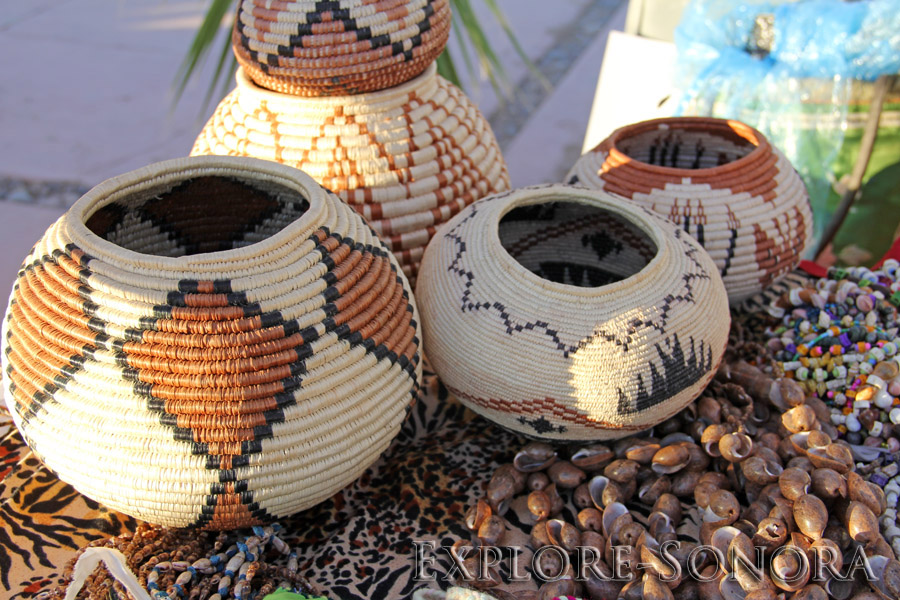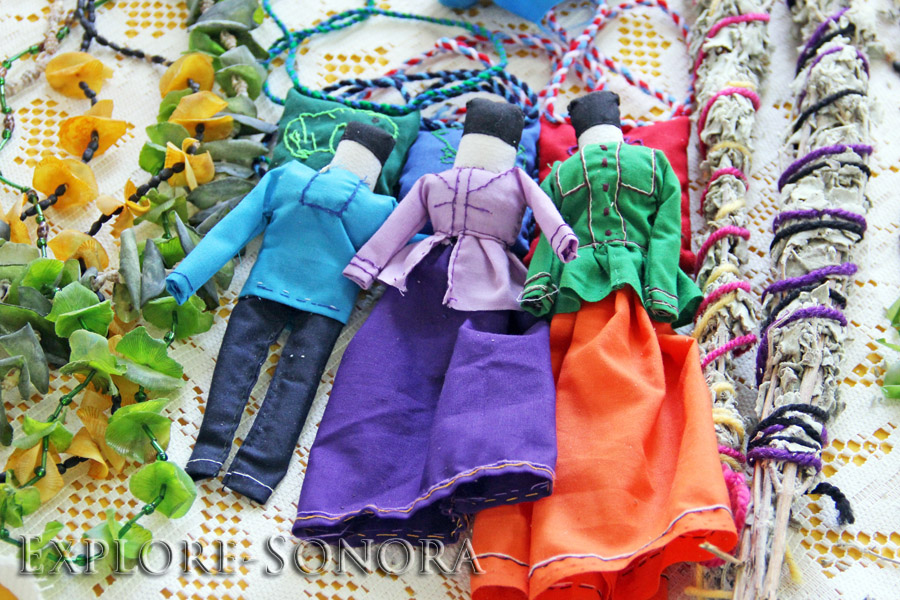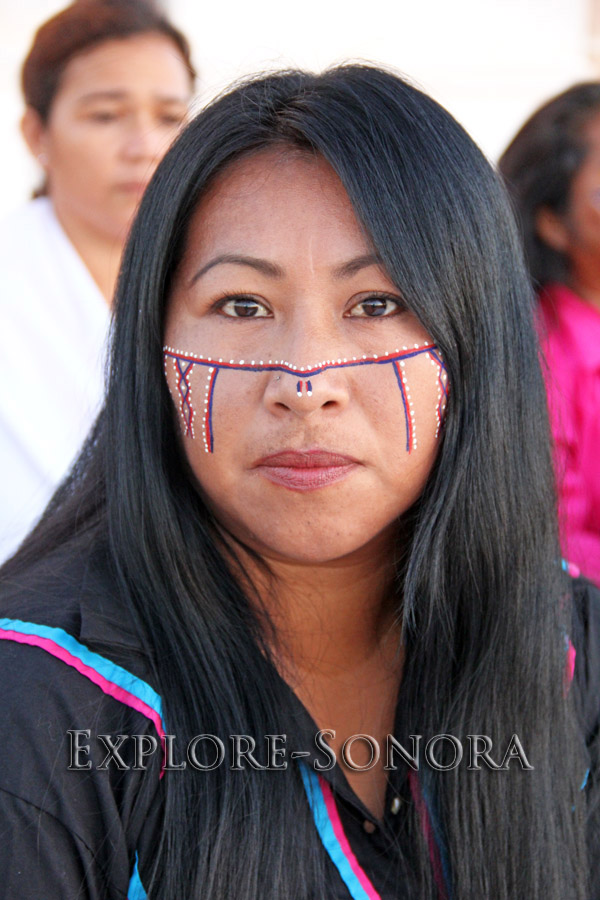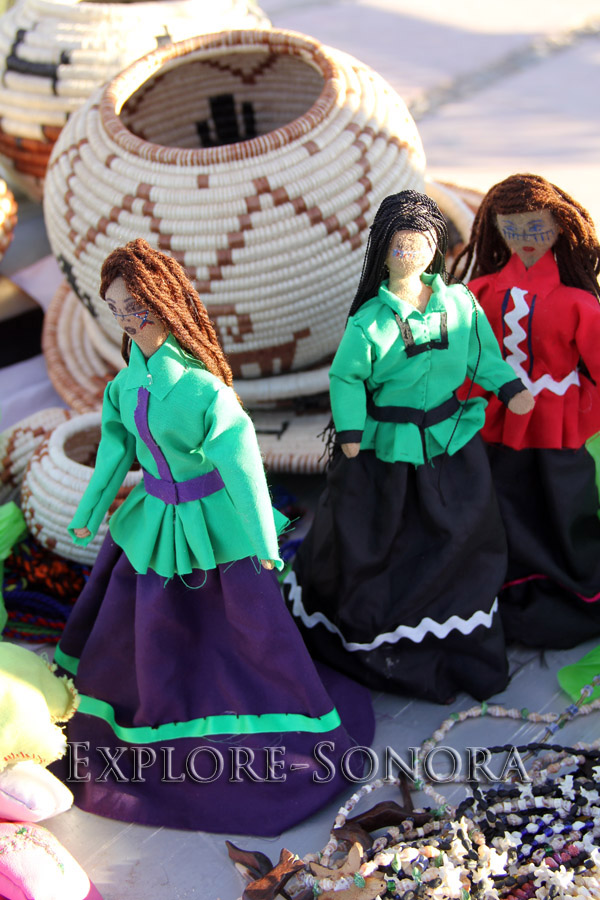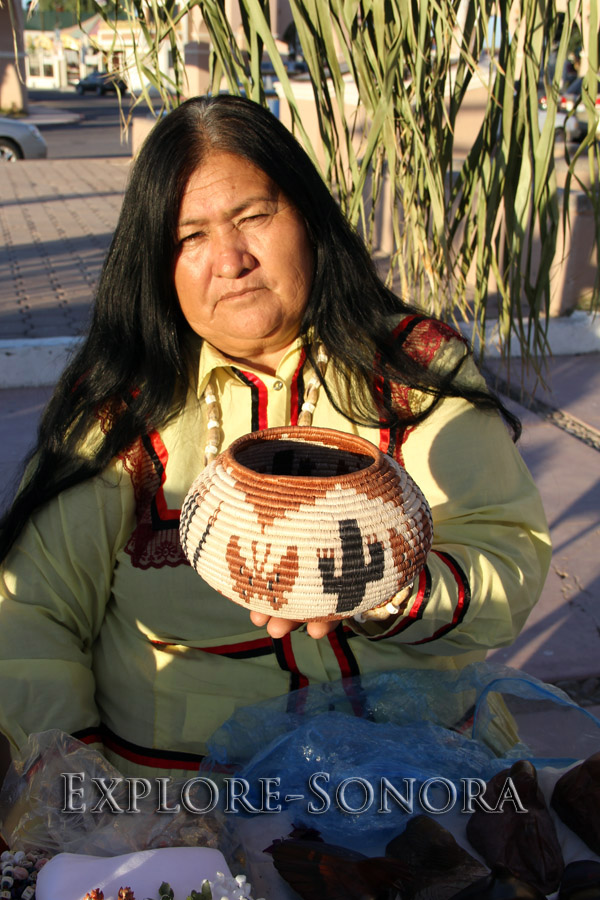Sonoran Indigenous Groups
Comcáac – Seri
The Seri peoples are a traditional fishing culture that has historically resided near the coast of Sonora. Isla Tiburón (Shark Island, or Tahejöc himquij in the language of the Seri) is sacred land for the Seris, they also inhabit the San Esteban Island (Cofteecöl hipcap) and nearby coastal areas like Kino Bay, and the coastal villages of Punta Chueca (Socaaix), and Desemboque (Haxöl Iihom).
They have survived for centuries in the harsh environments of the sea and the desert, and have a unique history and culture.
History
The Seri have been in the same area for more than 500 years. Because of their location on the coast, the Seri men had to travel distances inland for hunting and to get fresh water, and they are known for their running ability, strength and endurance. They were also known as fierce warriors, as they engaged in conflicts with neighboring tribes.
The Seri had contact with Coronado’s army in the 1500’s and with Father Eusebio Francisco Kino in the following century. Their numbers and populated land area have diminished since that time, however. Centuries ago there were once more than 5000 Seris but by 1930 their numbers had declined to 300. There are currently fewer than 1000.
While their territory used to extend southward to Guaymas, northward 75 miles from Isla Tiburón and inland to a point near Hermosillo, they are now concentrated along the coast near their sacred island of Isla Tiburón, the largest island in the Gulf of California.
There were originally six groups of Comcáac Seri:
Xiica hai iicp coii (those who live toward the north wind), also known as Tepocas or Saliñeros, who inhabited a large area to north of the other groups, along the Sonoran coast between Puerto Lobos and Punta Tepopa.
Xiica xnaai iicp coii (those that are to the south wind), also known as Tastioteños, who inhabited the coast from Bahía Kino to Guaymas.
Tahejöc comcáac (Tiburón Island people), also known as the Seris or Tiburones, who inhabited the coasts of Tiburón Island.
Heeno comcáac (desert people), who inhabited the central valley of Tiburón Island region.
Xnaamotat or Xnaa motat (those that came from the south), also known as Upanguaymas or Guaymas, who inhabited a small strip south of Guaymas between the Xiica hai iic coii and the Tahejöc comcáac.
Xiica hast ano coii (those that are in San Esteban Island), who inhabited San Esteban Island and the southern coast of Tiburón Island.
Society
The societal structure of the Comcaac is based on kinship systems that include reciprocal aid and distribution of resources that have been important to the overall survival of the group.
Every member of the tribe is entitled to request part of any food consumed in the community, whether they are invited or not. This includes the practice of Canoaa an hant cooit, the right to ask for fish from any fishing boat that arrives from the sea. The extended system of this communal sharing ensures that food and necessities are shared among family units.
With the formal integration of the Comcaac into Mexican national life, they were compelled to name a number of tribal authorities such as their supreme council, the ejidal commissariat, the communal property council and a fishing cooperative society.
Customs and Traditions
The main holiday celebrated by the Comcáac Seri is their new year, which is observed on the last day of June and the first day of July.
The Seri are known for their beautiful art and crafts, which include wood carvings, elaborate basket weavings (in corita and hasaj styles), necklaces made from bones and shells, and unique, imaginative dolls.
The language of the Seri, Cmiique iitom, is isolated – that is, it has not been shown to be genetically related to any other native languages of the region.
And while many indigenous peoples of Sonora experience difficulty in passing their native language on to younger generations, the majority of the Seri are bilingual in Spanish and Cmiique iitom. Part of this is due to a rich oral tradition that serves to preserve their culture and history.
Sources:
Seri Indians of Northern Mexico, by Bernice Johnson.
Wikipedia: Pueblo Seri
Wikipedia: Seri People

